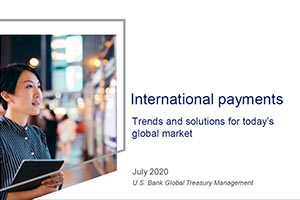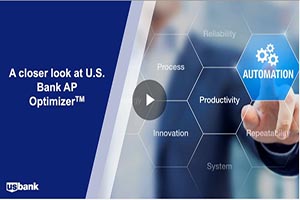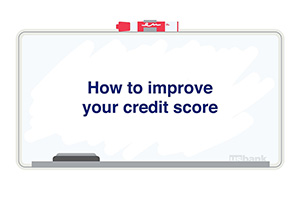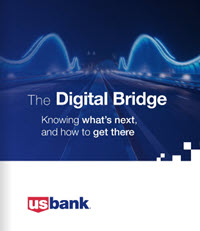Enhance Your Validation Options
Every business knows that there are certain fees associated with accepting card payments. Interchange rates are set by card brands and can constitute up to 90% of the direct cost of every card transaction. They are charged by banks to cover the cost of accepting, processing and authorizing transactions. There are hundreds of interchange categories impacting rates.1 Several factors play a role in determining card interchange rates. Some factors – like the type of card used (debit, credit, reward) and card brand (Visa, Mastercard, American Express) – are usually out of the business’ control. However, when businesses are strategic about the way they validate card payments and the processing procedures they implement, they can gain back some control over the costs they pay on card transactions.
EMV Chip Validation. One of the key drivers of fees that a business can exert some influence over is payment authentication. This is because typically, the riskier the card transaction, the higher the fee. For example, an in-store payment with a chip card carries less risk than an online purchase with the same card. Why? Because the chip can be used to validate that a card is legitimate when it’s inserted into an EMV payment device. Meanwhile, the online payment relies on key entry by the customer, but the chip cannot be used to validate the card. In this example, the interchange fee will be higher for the online transaction than the in-store transaction.
Card Security Code Validation. How a transaction is processed and settled can also determine the rate category. Transactions where the card is not physically presented at the time of purchase, such as online and by phone, are considered a higher security risk than transactions where the card is present. As a result, a higher interchange category may apply to the card not present (CNP) transaction. However, by gathering more information from your customers, a card not present transaction can qualify for a lower interchange rate. Capturing the card’s security code (CVV, CVC, CMID, CID) in combination with using address verification can help with this. As an added bonus, collecting this information helps reduce the risk of possible cardholder fraud and/or identity theft, which you and your legitimate customers will appreciate.
Adopt Card Payments Optimization Techniques
Commercial Card Optimization. By capturing additional transaction details for commercial card purchases at the time of payment, companies can qualify for reduced interchange card acceptance programs. These pricing programs are offered by Visa and Mastercard to businesses who sell to other businesses (a B2B model) and/or to governmental organizations.
When additional data is collected and transmitted on each transaction, it helps to validate the authenticity of the transaction, providing information about the transaction to the purchaser and the card brand. By improving validation, the transaction carries less risk and qualifies for a lower interchange rate. Some examples of B2B purchases are office supplies, computer equipment, telecommunications, shipment and delivery, consulting services and catering.
Fee Programs: Another way to optimize payments is through fee programs. These programs are designed to help businesses offset the costs of accepting card payments. There are three types of programs.
- Convenience fees: With convenience fees, businesses can offset the cost of accepting payments over the phone, online and by mail. Convenience fees allow a business to charge a flat fee when payments are made outside the customary in-store, card present environment.
- Surcharge: Enables a business to charge a percentage-based fee when a customer chooses to pay using a credit card. This program is available in most states but there are a few exceptions.
- Service fee: Restricted primarily to government agencies and educational institutions, this fee program enables businesses to impose a fee when a customer chooses to pay using a credit or debit card.
Fee programs are typically communicated to consumers prior to a transaction through signage or other clearly visible notification. These programs offer a proven way to expand payment choice for consumers while also effectively managing the costs associated with accepting payments.
Getting Started
Identifying the opportunities to optimize transaction processing within a large enterprise can be complex, which is why it’s important to work with your payment processor to analyze your card payment data across all your environments. That’s where we can help.
Using advanced analytics, U.S. Bank Payment Solutions Consultants help customers identify areas for optimization and make actionable recommendations to better manage card payments. By evaluating the business’ entire card processing environment, we can help you cost-effectively deliver a satisfying and secure payment experience.
1MAG 2017 Mid-Year Conference, “Optimizing Card Fees,” February 2017
















































































































 As a business leader, you are likely redefining your business model and restructuring your operations to meet new customer expectations. Your top priority is protecting the welfare of staff and customers while still delivering an exceptional customer experience. Naturally, this extends to ensuring they have a seamless and simple payment experience. What if you could give your customers the flexibility and convenience to pay the way they want while simultaneously achieving substantial cost savings for your business?
As a business leader, you are likely redefining your business model and restructuring your operations to meet new customer expectations. Your top priority is protecting the welfare of staff and customers while still delivering an exceptional customer experience. Naturally, this extends to ensuring they have a seamless and simple payment experience. What if you could give your customers the flexibility and convenience to pay the way they want while simultaneously achieving substantial cost savings for your business?